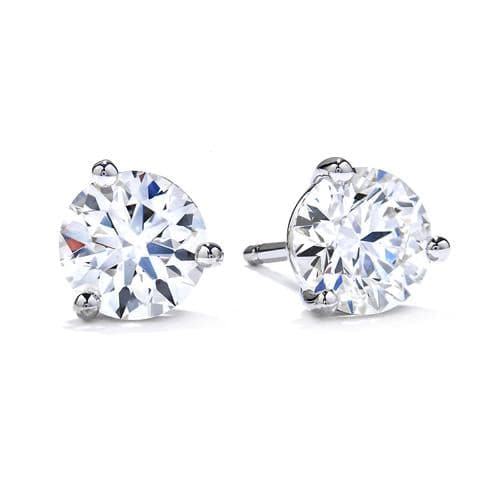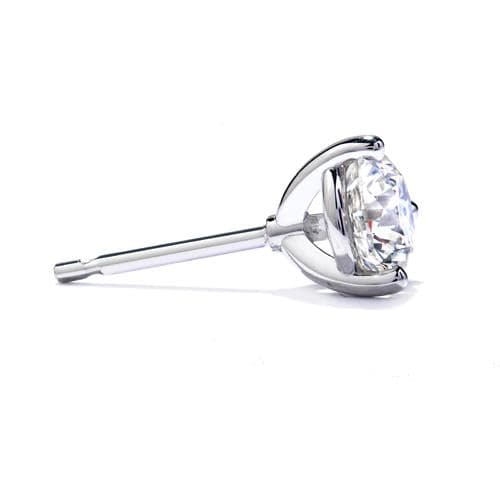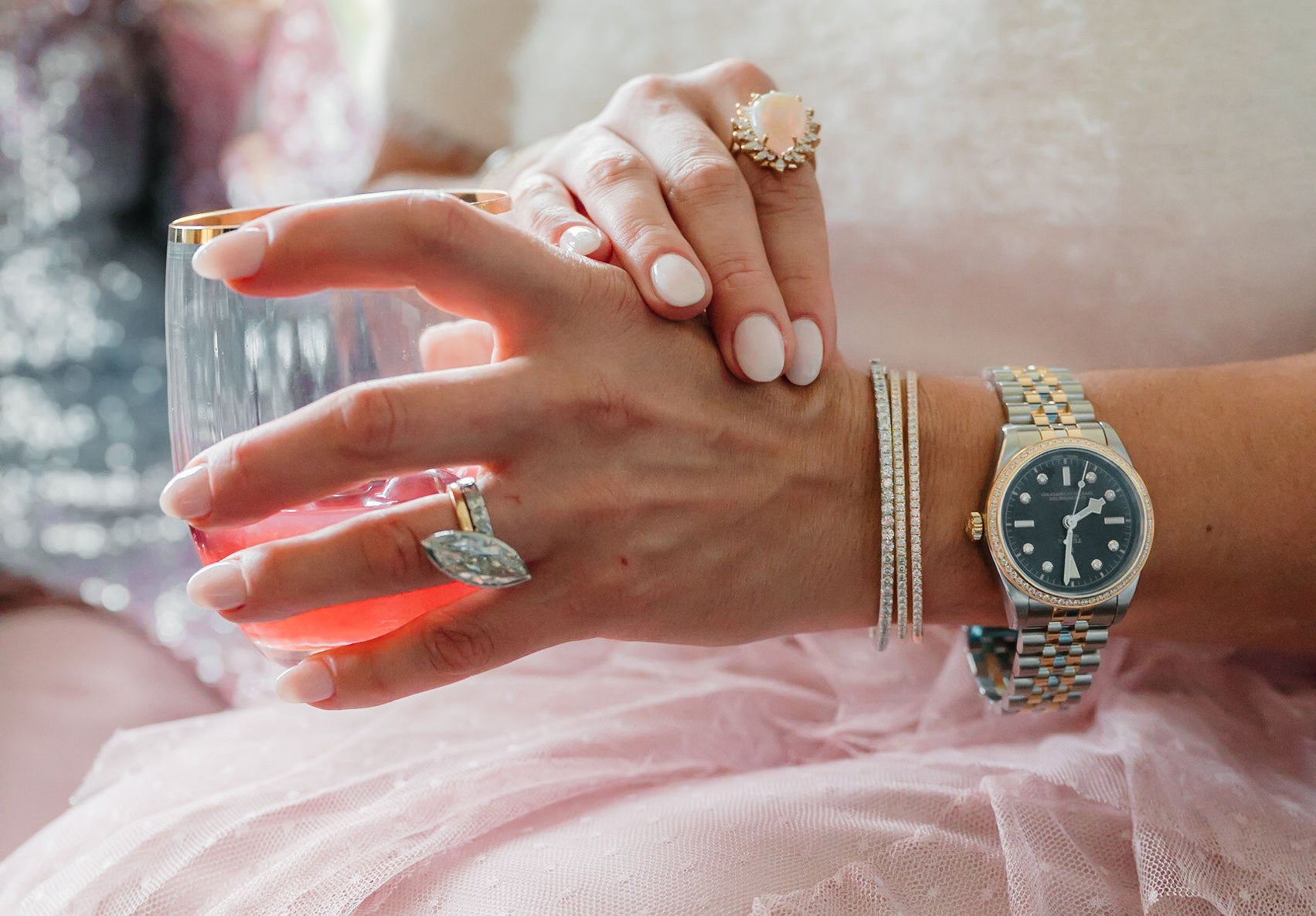At Springer's Jewelers, we often encounter inquiries from customers looking to personalize their jewelry to reflect their unique style and preferences. One common question is whether it's possible to transform white gold into yellow gold. Whether you're considering revamping a beloved piece or curious about the nature of precious metals, this guide will provide you with a thorough understanding of the process and what it involves.
Understanding Gold Alloys
Gold, in its pure form, is naturally yellow. However, to enhance its strength and durability for use in fine jewelry, it is commonly alloyed with other metals. White gold is created by mixing gold with metals like palladium, nickel, or silver, which give it a white hue. Yellow gold, on the other hand, is usually alloyed with a combination of silver, copper, and sometimes a small amount of zinc, maintaining its golden color but increasing its strength.

Can White Gold Be Transformed into Yellow Gold?
The short answer is yes, but it involves a process that should be handled by professional jewelers. Changing white gold to yellow gold is not a matter of simple re-plating; it requires altering the material's fundamental composition. Here's what the process typically involves:
Step 1: Assessing the Jewelry
The initial step involves a thorough assessment by a skilled jeweler to determine the current alloy composition and structural integrity of the piece. This assessment helps in planning the necessary adjustments to the metal alloy.
Step 2: Removing Rhodium Plating
If the white gold has been rhodium-plated, this layer must first be carefully removed to expose the underlying gold alloy.
Step 3: Melting and Re-alloying
The core process begins with melting down the existing jewelry. The white gold alloy is then adjusted by adding or removing specific metals. For a conversion to yellow gold, jewelers typically increase the copper content and adjust the silver ratio to achieve the desired yellow shade.
Step 4: Crafting the New Piece
Once the new yellow gold alloy is prepared, it must be crafted into the desired jewelry form. This stage requires meticulous craftsmanship to ensure that the reformed jewelry retains its quality and beauty.

Considerations Before Transforming Your Jewelry
Cost Implications
The process of transforming white gold into yellow gold can be costly. It involves labor-intensive steps including melting down the existing piece, modifying the alloy, and reshaping the jewelry. The costs can vary widely depending on the complexity of the design and the specifics of the jewelry piece.
Potential Risks
The process is not without risks. Melting and altering the alloy composition can potentially weaken the structure of the metal. It's vital to have this procedure done by experienced jewelers who specialize in metalwork and alloy chemistry.
Sentimental Value
For many, jewelry holds significant sentimental value. It’s important to consider how changing the fundamental nature of a piece might affect its sentimental value to you and whether the aesthetic change aligns with your emotional attachment to the piece.

Further Considerations
While the aesthetic transformation is compelling, several practical considerations should be factored into the decision:
- Expertise Required: The process requires precise craftsmanship and understanding of metallurgy. Consulting with experienced jewelers like those at Springer’s Jewelers ensures that the transformation enhances the piece’s beauty without compromising its integrity.
- Investment Value: It’s important to consider the investment aspect of jewelry. Transforming a piece may affect its future value, especially if it is an antique or a designer item. A professional jeweler can provide insights into how such changes might impact its market value.
- Customization Costs: Although transforming jewelry offers significant personal and stylistic benefits, it comes with costs associated with craftsmanship and materials. These should be weighed against the expected enjoyment and use of the renewed piece.
The Science Behind Gold Alloying
Gold alloying is a fascinating process that combines both art and science, crucial for creating various types of gold used in jewelry. Understanding this process can help you appreciate the craftsmanship behind your jewelry and the reasons for the different properties of yellow, white, and even rose gold.
Basics of Gold Alloying
Gold, in its pure form, is soft and malleable, which makes it impractical for everyday wear as jewelry. To enhance its durability and manipulate its color, gold is mixed with other metals to form an alloy. Each type of gold alloy has its unique mixture, tailored to achieve specific characteristics like color, hardness, and workability.
- Yellow Gold: The classic gold alloy combines pure gold with metals such as copper and silver. The higher the gold content (measured in karats), the softer and more yellow the alloy will be. Lower karat gold, like 14K or 10K, contains higher amounts of copper and silver, which strengthens the alloy but also gives it a slightly less saturated yellow tone.
- White Gold: To achieve the silver color in white gold, gold is alloyed with white metals such as palladium, nickel, or manganese. White gold is often coated with a thin layer of rhodium, a platinum group metal, to enhance its whiteness and increase its durability. Over time, this plating may wear off, revealing the slightly yellowish color of the white gold alloy beneath, which can be re-plated to restore its bright white finish.
- Rose Gold: This increasingly popular type of gold gets its warm, pink hue from a higher proportion of copper mixed with the gold. The amount of copper added not only affects the color depth but also enhances the toughness of the alloy, making rose gold a durable option for jewelry.

Metallurgical Considerations
The process of creating gold alloys must be precisely controlled to ensure the final product meets the desired standards. Jewelers and metallurgists must consider factors such as:
- Melting Points: Different metals have different melting points which can affect how they are combined. The alloying process requires careful temperature control to ensure a homogeneous mixture.
- Color Consistency: Achieving a consistent color in gold alloys requires precise measurements and understanding of how different metals interact. For example, slight variations in the amount of nickel or palladium can significantly affect the appearance of white gold.
- Workability and Hardness: The choice of alloying metals affects the hardness and workability of the gold. Harder alloys are more durable but can be more challenging to work with, requiring specialized tools and techniques.
Conclusion
Choosing to transform white gold jewelry to yellow gold is a deeply personal decision that can breathe new life into a piece, aligning it with one’s current tastes and styles. At Springer’s Jewelers, we specialize in helping our clients navigate these choices, ensuring their transformed jewelry not only meets but exceeds their expectations in both style and function. Visit us to explore how we can personalize and modernize your treasured pieces, making them a perfect fit for your lifestyle and personal expression.








